
The Dorset Regiment was a line infantry regiment of the British Army in existence from 1881 to 1958, being the county regiment of Dorset. Until 1951, it was formally called the Dorsetshire Regiment, although usually known as "The Dorsets". In 1958, after service in the Second Boer War along with World War I and World War II, the Dorset Regiment was amalgamated with the Devonshire Regiment to form the Devonshire and Dorset Regiment. In 2007, it was amalgamated with the Royal Gloucestershire, Berkshire and Wiltshire Regiment, The Light Infantry and the Royal Green Jackets to form a new large regiment, The Rifles.

The Keep, Dorchester is part of the former county barracks of the 39th (Dorsetshire) Regiment of Foot and the 75th (Stirlingshire) Regiment of Foot. The barracks were built in about 1880 and housed various regiments as units were amalgamated. It ceased to be used in 1958 and most of the site was redeveloped in the 1960s, but the keep remained in Ministry of Defence hands and is now used as a regimental museum.
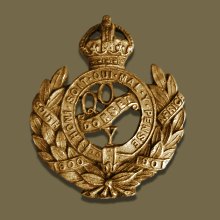
The Queen's Own Dorset Yeomanry was a yeomanry regiment of the British Army founded in 1794 as the Dorsetshire Regiment of Volunteer Yeomanry Cavalry in response to the growing threat of invasion during the Napoleonic wars. It gained its first royal association in 1833 as The Princess Victoria's Regiment of Dorset Yeomanry Cavalry, and its second, in 1843, as the Queen's Own Regiment of Dorset Yeomanry Cavalry.
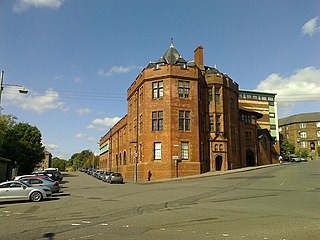
The Yorkhill Street drill hall is a former military installation in Glasgow.

The Phoenix Street drill hall is a former military installation in Lancaster, Lancashire.

Stockport Armoury is a military installation in Stockport, Greater Manchester, England. It is a Grade II listed building.

The Poyser Street drill hall is a former military installation in Wrexham, Wales.

The Prescott Street drill hall is a former military installation in Halifax, West Yorkshire, England. It is a Grade II listed building.

The St Paul's Street drill hall is a military installation in Huddersfield, West Yorkshire. It is a Grade II listed building.
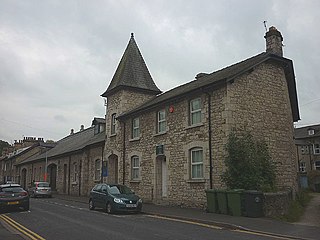
The Queen Katherine Street drill hall, sometimes known as the Aynam Road drill hall is a former military installation located on Queen Katherine Street, off Aynam Road, in Kendal, Cumbria, England.

The Whittimere Street drill hall is a former military installation in Walsall, West Midlands.
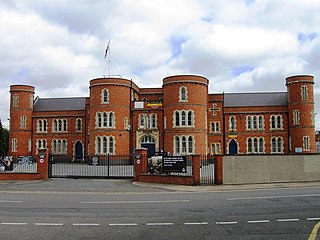
The Clare Street drill hall is a military installation in Northampton, Northamptonshire. It is a Grade II listed building.

The Corn Exchange is a former chapel, trading facility and military installation at Bank Street in Tonbridge, Kent.

The Horninglow Street drill hall is a former military installation in Burton upon Trent. It is a Grade II listed building.
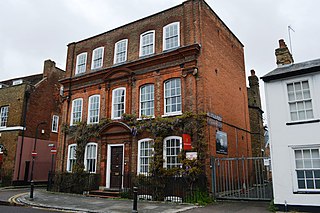
Yeomanry House is a military installation in Hertford. It is a Grade II* listed building.
The Dorset Militia was an auxiliary military force in the county of Dorsetshire in South West England. From their formal organisation as Trained Bands in 1558 until their final service as the Special Reserve, the Militia regiments of the county carried out internal security and home defence duties. They saw active service during the Second Bishops' War and the English Civil War, and played a prominent part in suppressing the Monmouth Rebellion. After being the first English militia regiment to reform in 1758, they served in home defence in all of Britain's major wars, including service in Ireland, and finally trained thousands of reinforcements during World War I. After a shadowy postwar existence they were formally disbanded in 1953.

The 1st Dorsetshire Artillery Volunteers and its successors were part-time coast defence units of the British Army from 1859 to 1956. Although these units saw no action, they protected the Dorset Coast, including the naval base of Portland Harbour, in both World Wars and also supplied trained gunners to siege batteries engaged on the Western Front during World War I. The unit continued in the Territorial Army after World War II.

The Dorsetshire & Wiltshire Fortress Royal Engineers was a part-time unit of Britain's Royal Engineers formed in 1908. It helped to defend the naval base of Portland Harbour during World War I and provided a detachment to serve with the British Expeditionary Force on the Western Front. Between the World Wars the unit took on the additional role of anti-aircraft searchlight defence and during World War II it was expanded into a full searchlight regiment that served during the Plymouth Blitz.

The Exeter & South Devon Volunteers was the premier unit of Britain's Volunteer Force. Formed in 1852 it went on to become a battalion of the Devonshire Regiment. Both its active service battalions went to garrison India on the outbreak of the First World War, and then saw action in Mesopotamia and Palestine. In the Second World War, the battalion served in the garrison of Gibraltar. It continued in the postwar Territorial Army until it was merged with other West Country units. Its successors today serve in a reserve battalion of The Rifles.

The 5th Battalion, Devonshire Regiment, was a part-time unit of the British Army recruited in the county of Devon. It was formed in the Territorial Force in 1908 by amalgamating two existing Volunteer Battalions of the Devonshire Regiment. The battalion served in India and fought in Palestine and on the Western Front during World War I. In World War II it provided two anti-tank artillery units, which served in Tunisia, Italy and North West Europe. They were both merged into other Devonshire units in 1950.




















